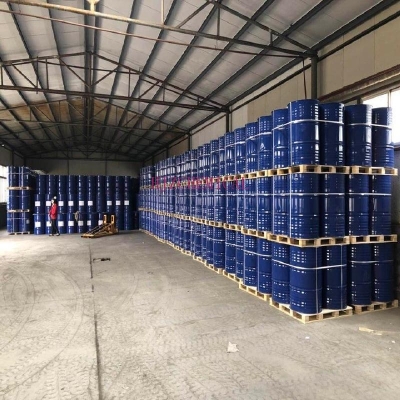-
Categories
-
Pharmaceutical Intermediates
-
Active Pharmaceutical Ingredients
-
Food Additives
- Industrial Coatings
- Agrochemicals
- Dyes and Pigments
- Surfactant
- Flavors and Fragrances
- Chemical Reagents
- Catalyst and Auxiliary
- Natural Products
- Inorganic Chemistry
-
Organic Chemistry
-
Biochemical Engineering
- Analytical Chemistry
- Cosmetic Ingredient
-
Pharmaceutical Intermediates
Promotion
ECHEMI Mall
Wholesale
Weekly Price
Exhibition
News
-
Trade Service
According to Grand View Research, the Middle East and Africa (MEA) low-voltage cable market demand is expected to reach $2.
7 billion
by 2020 due to growth in various economic sectors.
Among them, the significant growth in commercial and residential applications is expected to contribute to the healthy revenue growth
of the low voltage cable market in the Middle East.
Meanwhile, growing demand in areas such as construction, power, renewable energy, telecommunication lines, airports, and subways will drive the low-voltage cable industry
.
With the increasing application in industrial and residential areas, the demand for the low-voltage cable market has grown
steadily over the past few years.
However, high demand from different application areas such as lighting, automation, video surveillance, infrastructure, fire safety, sound, and security are expected to drive the business opportunities
.
For example, low-voltage cables and cabling support home cabling, infrastructure, and digital technologies
ranging from telephony to a variety of complex infrastructures such as multiple TVs and video streams.
In the Middle East's low-voltage cable demand model, where most of the market share is held by oil and gas, there is a constant demand
for quality assurance products in the industry.
These factors are expected to drive market innovation
in technology and R&D.
In addition to oil and gas, the researchers expect the Middle East to see impressive growth in other industries such as automotive, construction, and non-automotive industries, especially large-scale projects to replace old transmission lines with newer, advanced cables to improve safety, and the deployment of smart grids to enhance transmission and distribution systems
in the region.
These two factors are expected to drive the market demand in the region and provide attractive business opportunities
for top players in the coming years.
According to the researchers, the huge growth in demand for electricity in the commercial, industrial and residential sectors could positively impact the demand
for low-voltage cables in the Middle East, GCC countries such as the UAE and Saudi Arabia, and Asia Pacific and Africa.
Governments in developing countries are focusing on making significant investments
in infrastructure and overall economic growth.
Growing R&D projects and increased funding for innovation projects can drive demand
for industries such as low-voltage cables in the coming years.
According to expert researchers, investments by global leaders can further drive expansion opportunities
in regional markets.
The commercial sector is particularly driven
by strong growth in the region's construction sector.
In addition, increasing investments in electricity and renewable energy have also impacted the market and are expected to drive the growth of
the low-voltage cable market.
Saudi Arabia, for example, plans to build 16 nuclear reactors
by 2040.
Egypt and Jordan have signed contracts
with Russia's Rosatom to build nuclear reactors.
These power generation investments provide the impetus
for the market.
FiT has had a positive impact
on the market where governments pay producers to provide additional electricity to the national grid.
Governments are expected to shift to financing models allocated to the private sector, including independent hydropower projects (IWPPs) and independent power plants (IPPs).
These business models facilitate commercial-scale power generation
.
In light of the upcoming 2022 FIFA World Cup in Qatar, Middle Eastern countries are gearing up for
a boom in construction and infrastructure development activities.
In addition to projects directly related to event venues, new concepts and emerging plans are expected to increase investment and business opportunities
in commercial buildings, restaurants, commercial vehicles, and more.
This is expected to drive the demand
for low-voltage cables in the region in the coming years.
Thus, Qatar's low-voltage cable market is expected to grow
at a CAGR of 6.
6% during the forecast period.
High demand in power generation and transmission, instrumentation cables, switchgear, industrial robots, petrochemicals, and other sectors can further shape demand patterns
in the near future.
Due to increased power generation, a booming construction industry, and a rapidly growing population, the demand for cables in the region is unmatched
.
Dubai's Dubai Cable, Egypt's El-Sewedy, Saudi Cable Company, Saudi Jeddah Cable and Riyadh Cable will be the main local low-voltage cable manufacturers
.
To ensure the supply of raw materials, most companies are working with suppliers to stock raw materials
.
However, Grand View Research warns of volatile raw material prices and changes in market dynamics
.
The researchers recommend a greater focus on customer service, innovation in product portfolio, and strong after-sales service
.
The growing emphasis on eco-friendly products is also expected to create business opportunities
for market players in the coming years.
According to Grand View Research, the Middle East and Africa (MEA) low-voltage cable market demand is expected to reach $2.
7 billion
by 2020 due to growth in various economic sectors.
Among them, the significant growth in commercial and residential applications is expected to contribute to the healthy revenue growth
of the low voltage cable market in the Middle East.
Meanwhile, growing demand in areas such as construction, power, renewable energy, telecommunication lines, airports, and subways will drive the low-voltage cable industry
.
With the increasing application in industrial and residential areas, the demand for the low-voltage cable market has grown
steadily over the past few years.
However, high demand from different application areas such as lighting, automation, video surveillance, infrastructure, fire safety, sound, and security are expected to drive the business opportunities
.
For example, low-voltage cables and cabling support home cabling, infrastructure, and digital technologies
ranging from telephony to a variety of complex infrastructures such as multiple TVs and video streams.
In the Middle East's low-voltage cable demand model, where most of the market share is held by oil and gas, there is a constant demand
for quality assurance products in the industry.
These factors are expected to drive market innovation
in technology and R&D.
In addition to oil and gas, the researchers expect the Middle East to see impressive growth in other industries such as automotive, construction, and non-automotive industries, especially large-scale projects to replace old transmission lines with newer, advanced cables to improve safety, and the deployment of smart grids to enhance transmission and distribution systems
in the region.
These two factors are expected to drive the market demand in the region and provide attractive business opportunities
for top players in the coming years.
According to the researchers, the huge growth in demand for electricity in the commercial, industrial and residential sectors could positively impact the demand
for low-voltage cables in the Middle East, GCC countries such as the UAE and Saudi Arabia, and Asia Pacific and Africa.
Governments in developing countries are focusing on making significant investments
in infrastructure and overall economic growth.
Growing R&D projects and increased funding for innovation projects can drive demand
for industries such as low-voltage cables in the coming years.
According to expert researchers, investments by global leaders can further drive expansion opportunities
in regional markets.
The commercial sector is particularly driven
by strong growth in the region's construction sector.
In addition, increasing investments in electricity and renewable energy have also impacted the market and are expected to drive the growth of
the low-voltage cable market.
Saudi Arabia, for example, plans to build 16 nuclear reactors
by 2040.
Egypt and Jordan have signed contracts
with Russia's Rosatom to build nuclear reactors.
These power generation investments provide the impetus
for the market.
FiT has had a positive impact
on the market where governments pay producers to provide additional electricity to the national grid.
Governments are expected to shift to financing models allocated to the private sector, including independent hydropower projects (IWPPs) and independent power plants (IPPs).
These business models facilitate commercial-scale power generation
.
In light of the upcoming 2022 FIFA World Cup in Qatar, Middle Eastern countries are gearing up for
a boom in construction and infrastructure development activities.
In addition to projects directly related to event venues, new concepts and emerging plans are expected to increase investment and business opportunities
in commercial buildings, restaurants, commercial vehicles, and more.
This is expected to drive the demand
for low-voltage cables in the region in the coming years.
Thus, Qatar's low-voltage cable market is expected to grow
at a CAGR of 6.
6% during the forecast period.
High demand in power generation and transmission, instrumentation cables, switchgear, industrial robots, petrochemicals, and other sectors can further shape demand patterns
in the near future.
Due to increased power generation, a booming construction industry, and a rapidly growing population, the demand for cables in the region is unmatched
.
Dubai's Dubai Cable, Egypt's El-Sewedy, Saudi Cable Company, Saudi Jeddah Cable and Riyadh Cable will be the main local low-voltage cable manufacturers
.
To ensure the supply of raw materials, most companies are working with suppliers to stock raw materials
.
However, Grand View Research warns of volatile raw material prices and changes in market dynamics
.
The researchers recommend a greater focus on customer service, innovation in product portfolio, and strong after-sales service
.
The growing emphasis on eco-friendly products is also expected to create business opportunities
for market players in the coming years.







